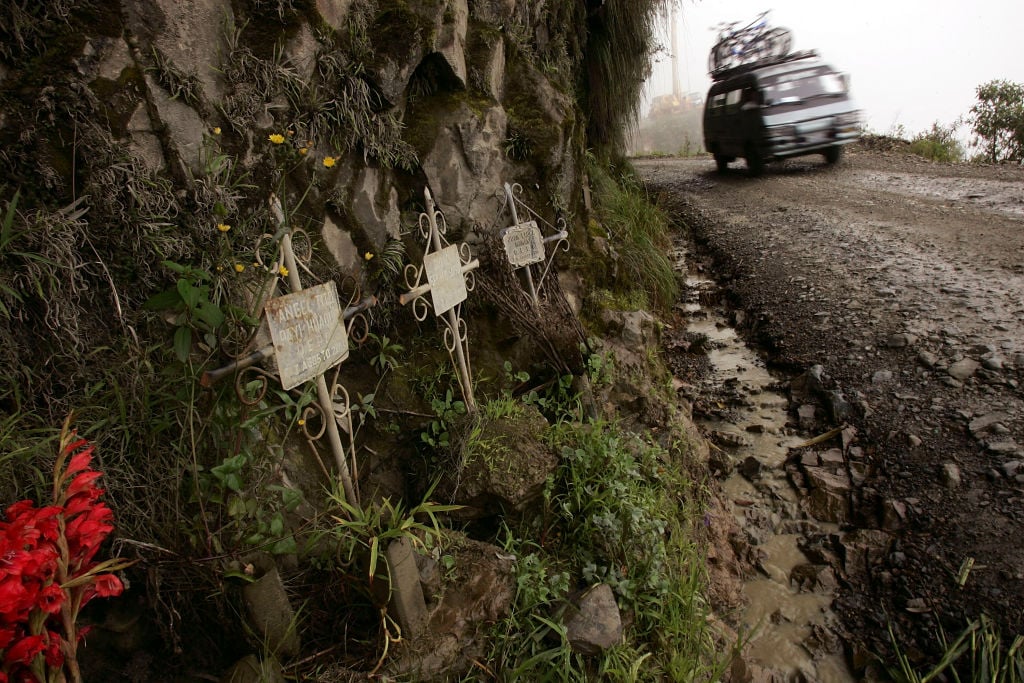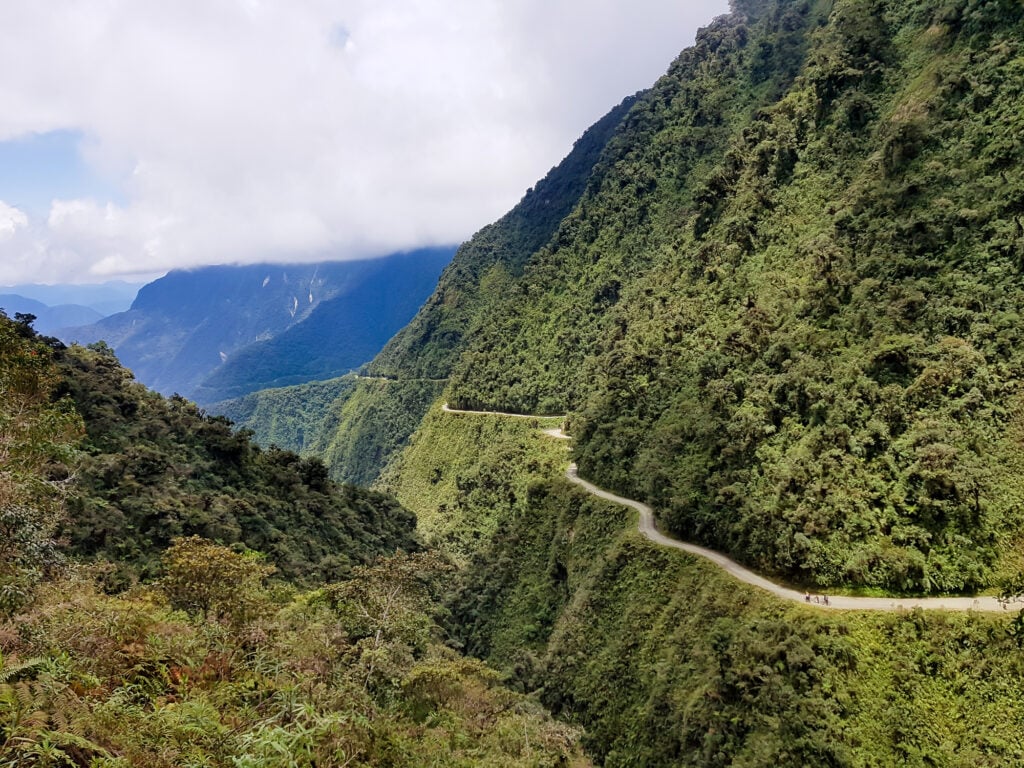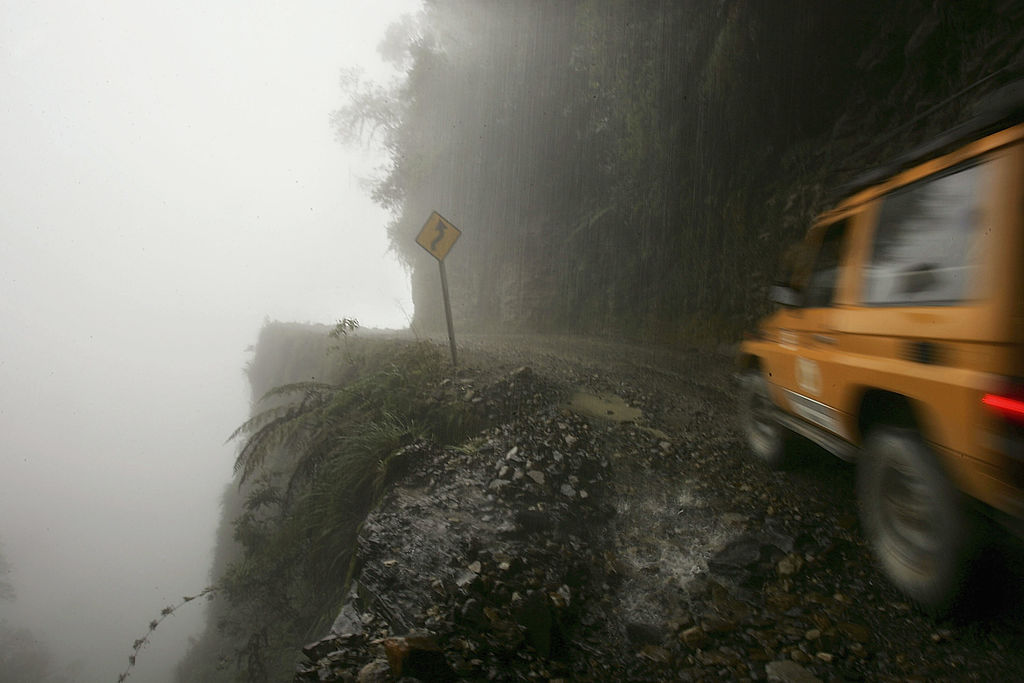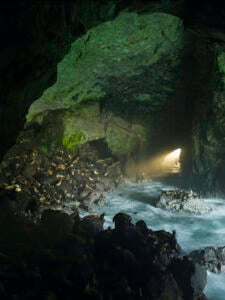The Yungas Road, linking the Bolivian Andes to the Amazonian lowlands, is world-renowned. Since it was built in the 1930s, it has claimed so many lives that it has coined the nickname, ‘Death Road’, or ‘Camino de la Muerte’. Now it is a tourist attraction, drawing mountain bikers and thrill seekers for a road trip like no other.

The picturesque road snakes from Bolivia’s largest city of La Paz, high up in the Andes mountains, and runs downhill through the Yungas Valleys to the the Amazon lowlands. From its high point at 15,750 ft (4,800m), it plummets well over 11,000 ft (3,500m) in under 40 miles.
From afar, the sad history of the Yungas Road might not immediately be clear. Yet on closer inspection, it is lined with memorials – crosses, flowers, photos and names of people who have perished here. Many of these are now fading, as the road was at its most dangerous in the 1980s and 1990s.

It was in the 1990s that the Inter-American Development Bank first gave it its infamous nickname. Your Spanish doesn’t need to be fluent to get the gist of ‘Camino de la Muerte’, and back then it was estimated that between 200-300 motorists fell off the Death Road each year. The worst accident occurred in 1983 when a bus came off the road and killed over 100 passengers who were on board.
Read More: Oppenheimer Beach | Where the father of the A-Bomb found peace
The Yungas Road was built after the Chaco War by Paraguayan prisoners of war, at the time the first direct connection from La Paz to the northern Amazon regions. It is largely without guardrails, often as narrow as ten feet and features multiple blind corners. Factor in the dangerous weather conditions at altitude, and the small waterfalls that run down the mountains it passes through, and it is easy to see why the Yungas Road is so dangerous.

While it might seem unnecessarily risky, the Yungas is a valuable, fertile and biodiverse region. Its name translates as “warm lands” in the indigenous language of Aymara, and it is rich in both coca and gold.
The risk is not just for motorists and passengers, but also for the many cyclists who travel down the road. Several tour companies offer mountain bike tours to tourists, but with varying temperatures and extreme weather, it’s far from an easy downhill ride. Bikes, cars, motorbikes and buses all have to be careful when meeting at blind corners.

Because of this, authorities in Bolivia have changed the laws in recent years, meaning the Yungas Road operates under a different code to the rest of the country. For one, all vehicles drive on the left instead of the right, as it gives the driver a better view of the edge of the road and oncoming traffic. All ascending vehicles are also given the right of way, meaning those coming down the hill, presumably at a higher speed, need to slow down and move to the outside of the road while the other car passes.
The Bolivian government is now trying to make it safer still. These efforts have included more guardrails and a 21st-century development of an alternative route for the northernmost section, where there is now a two-lane motorway.





1 Comment
Ahaa, its pleasant discussion regarding this piece of writing at this place at
this blog, I have read all that, so now me also commenting at this place.